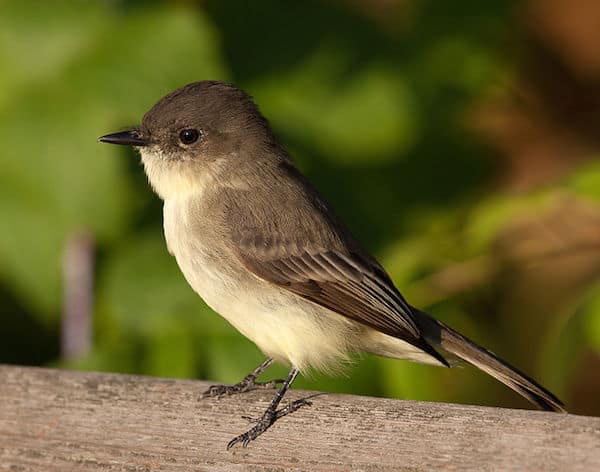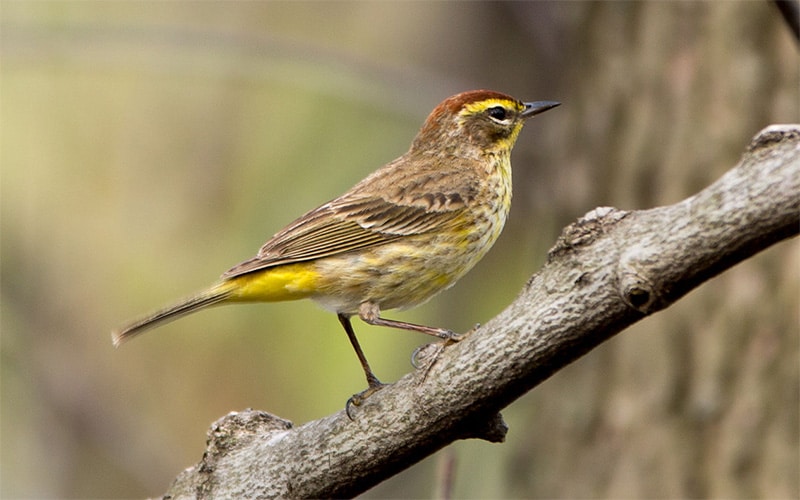The eastern phoebe, unlike most other flycatchers, is relatively easy to identify. A medium-sized bird that constantly wags its tail, the phoebe also gives a vocal clue to its identity by softly uttering its name—fee-bee. Phoebes are a dark, drab gray-brown on the back, with faint wing bars and a light breast and belly, often washed with yellow.
Listen for
Eastern Phoebes call out FEE-bee! or FEE-bree! They also utter a soft, sweet-sounding chip note.
Find it
Wherever there is a suitable nesting ledge (with abundant flying insects nearby), phoebes may be found. Natural habitats include woodland edges and small streams. Common throughout most of eastern North America during the spring and summer (eastern phoebes breed far into northern Canada), in winter many phoebes migrate to the southern Atlantic Coast and along the Gulf Coast into Mexico.
Feed it
The eastern phoebe is a perch-and-wait hunter, watching for flying insects from an exposed perch and making short flying forays to nab its prey. Phoebes consume vast quantities of flying insects, but will also pluck food items from the ground or vegetation. Wasps, bees, flying ants, moths, and butterflies constitute much of their prey. In fall and winter, when insects are scarce, phoebes will eat small fruits and berries.
Nesting Behavior
A very adaptable flycatcher, the eastern phoebe often nests on human structures, such as on building ledges, inside barns, under bridges, and in culverts. Nesting in such proximity to humans, phoebes are used to our activity and this apparent tameness allows us to think of them as “our phoebes.”
Many bird watchers consider the early spring return of the phoebe (and not the American robin) to be the most reliable sign of spring’s arrival. Phoebes are early nesters throughout the breeding range, and nest building often begins almost immediately after a male attracts a mate to a likely site.
Favored natural nest sites include rock ledges and caves, but they also nest in barns or outbuildings, and on handy ledges or sills on house porches. The female builds the cup-shaped nest out of mud, moss, and grass. Four to six eggs are laid and incubated by the female alone, for just over two weeks. Young phoebes, unless disturbed earlier, fledge after about 16 days.
WOW!
The first North American ornithologist to band birds, John James Audubon tied a small silver thread around the legs of nestling Eastern Phoebes.




